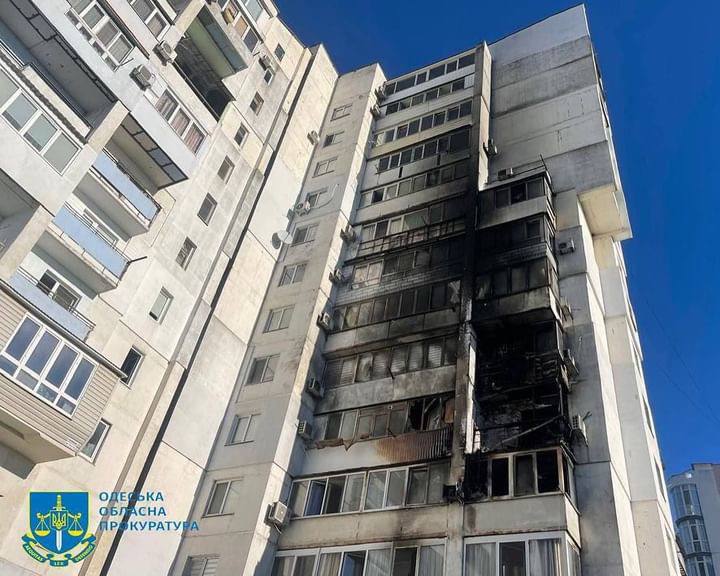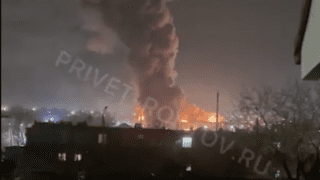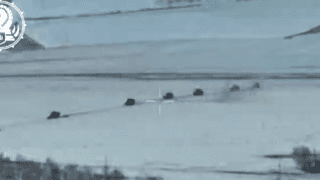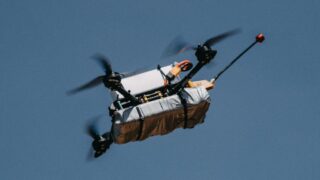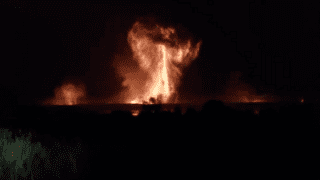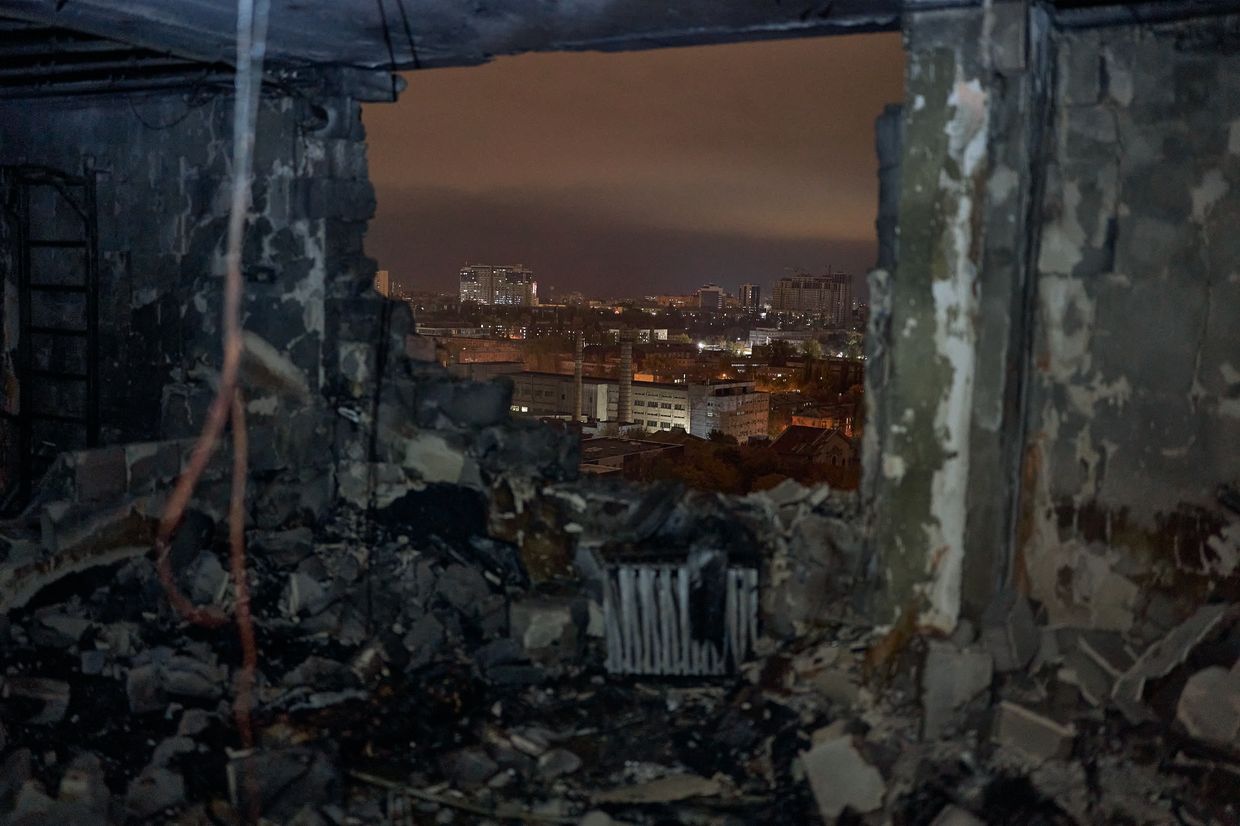
'We are exhausted' — how Ukrainians cope with nightly Russian drone attacks
Marharyta Koldanova was standing at a bus stop in a residential area in Kyiv when a sudden loud noise went off, prompting her to take out a tourniquet from her bag and prepare to quickly apply it in case she got injured by an aerial attack.
"I was overwhelmed with adrenaline and stress," Koldanova told the Kyiv Independent.
The air raid alarm that usually alerts Ukrainians of a threat of a Russian drone or missile strike wasn’t on. The sound she heard wasn’t a weapon exploding but the noise coming from a local thermal power plant — a regular buzz for a big city like Kyiv.
Yet for Koldanova, whose daily life has been disrupted by Russian aerial attacks for 2.5 years, even a regular loud noise comes with an immediate sense of danger.
Like thousands of other Ukrainians struggling with mental health issues due to the war, Koldanova has developed a hypersensitivity to sounds, anxiety, and insomnia. Since Russian strikes happen most often at night, they have been robbing millions of Ukrainians of proper sleep.
To target cities far from the front line, Russia has been employing a combination of missiles and drones, often launched in large-scale coordinated attacks. However, in the past couple of months, Moscow’s forces have changed tactics, launching barrages of drones nearly every night, and largely avoiding missiles.
In October alone, over 2,000 drones attacked Ukraine, according to the Ukrainian military. These drone barrages aim to exhaust and locate the country's air defenses ahead of a larger campaign of strikes targeting Ukraine’s energy infrastructure this winter, experts say.
Though not as destructive as missiles and bombs, drone attacks often stretch on for many hours and can be launched far more frequently since drones are cheap and easy to produce.
For long-range drone strikes, Russia’s weapon of choice is the Iranian-designed Shahed, which can travel up to 2,500 kilometers, reaching any settlement in Ukraine.
Since Moscow first employed Shaheds in October 2022, these killer drones have contributed to the deteriorating mental health of Ukrainians, and the destruction of critical infrastructure and homes, putting an additional burden on the Ukrainian military tasked with the defense of the Ukrainian skies.


Sleepless nights
"If I fall asleep before the air alarm, I often wake up to explosions, panicking and confused," Koldanova, a 32-year-old copywriter, told the Kyiv Independent, describing how her nights have been lately. "If the alarm starts when I'm awake, I can't go to sleep until the threat is over. I just sit and wait for the all-clear."
Sometimes, this wait stretches until early morning.
Living close to a Kyiv air defense site, Koldanova hears explosions close-by and sees flashes of the defense system firing at drones and missiles from her window. She's too afraid to spend 10 minutes to run to a nearby shelter, fearing debris could fall nearby and injure her, so she hides in her corridor with her dog, watching red flashes and listening attentively to every sound.
"Every time I hear an explosion, I think how close it was to me and whether (the next one) could hit my house."
Running on just 3-4 hours of sleep, Koldanova finds it hard to concentrate at work the next day. Many Ukrainians struggle with low productivity, as experts say sleep deprivation hampers decision-making, memory, and performance.
"Sleep deprivation makes even minor dangers feel extreme, creating the feeling that danger is literally at every step and not letting you relax for a moment," explains Nika Bielska, a sleep consultant and geneticist. "This makes it difficult to study, work, and just live your everyday life, strains family relationships, and heightens the risk of PTSD (post-traumatic stress disorder)."




Already in fall 2022, over 70% of Ukrainian business leaders cited the deterioration of employee mental health as the main challenge for their companies. Fatigue and tension are now the dominant feelings for Ukrainians, according to a June 2024 survey by Gradus Research.
Chronic sleep loss can lead to anxiety and depression and increase risks for physical health, including cancer and diabetes, says Volodymyr Voloshyn, a Ukrainian crisis psychologist and the head of the Institute of Health Psychology. He suggests Russia may be using sleep deprivation to make Ukrainians more vulnerable to manipulation and disinformation, important tools of modern warfare.
Bielska adds that the longer sleep deprivation persists, the harder it becomes to relax, creating a "vicious cycle" of lack of sleep.
Even when Kyiv gets a rare quiet night, free from Russian attacks, any loud noise can deprive local residents of sleep due to the developed hypersensitivity to sounds.
"When there's a thunderstorm and rain, I can't sleep," says Koldanova. "I wake up panicking and check the news to make sure it was not an explosion."


Shattered homes
Overnight on Oct. 8, during yet another Russian drone attack against Ukraine, debris hit Kira Rodkina’s residential building in Chornomorsk, a small southern city on the Black Sea coast.
A fire engulfed one of the apartments where a family with children lived. Luckily, all of them survived the attack. Rodkina's apartment got off with broken windows and a burned ceiling. She had previously moved to Odesa when her husband joined the Ukrainian army in 2023, so she learned that her building had been hit by local news.
"(When I saw the photos), I felt rage, and I already said goodbye to it (the apartment) in my mind. I thought it was completely burned, and I would come and see the ashes," Rodkina, a 30-year-old volunteer who has been raising money for Ukraine’s Armed Forces since the start of the full-scale invasion, told the Kyiv Independent.
Since Russian troops started using Shahed drones against Ukraine in the autumn of 2022, Ukrainian forces have become skilled at shooting down the loitering munitions before they reach densely populated areas. Therefore, some Ukrainians have developed a perception of Shaheds as less dangerous weapons, often neglecting to go to the shelter amid drone attacks.
However, kamikaze drones like Shaheds, while flying much slower than missiles, are still capable of causing serious damage to buildings and endangering civilians as they are estimated to weigh about 200 kilograms and carry around 45 kg of explosives, with upgraded Shaheds reportedly having twice as heavy warheads.
A Russian drone strike against Kharkiv on Feb. 10, 2024, caused a fire that engulfed 15 homes and killed seven people, including a family with three children, as well as led to a fuel leak contaminating over 10,000 square meters of land.
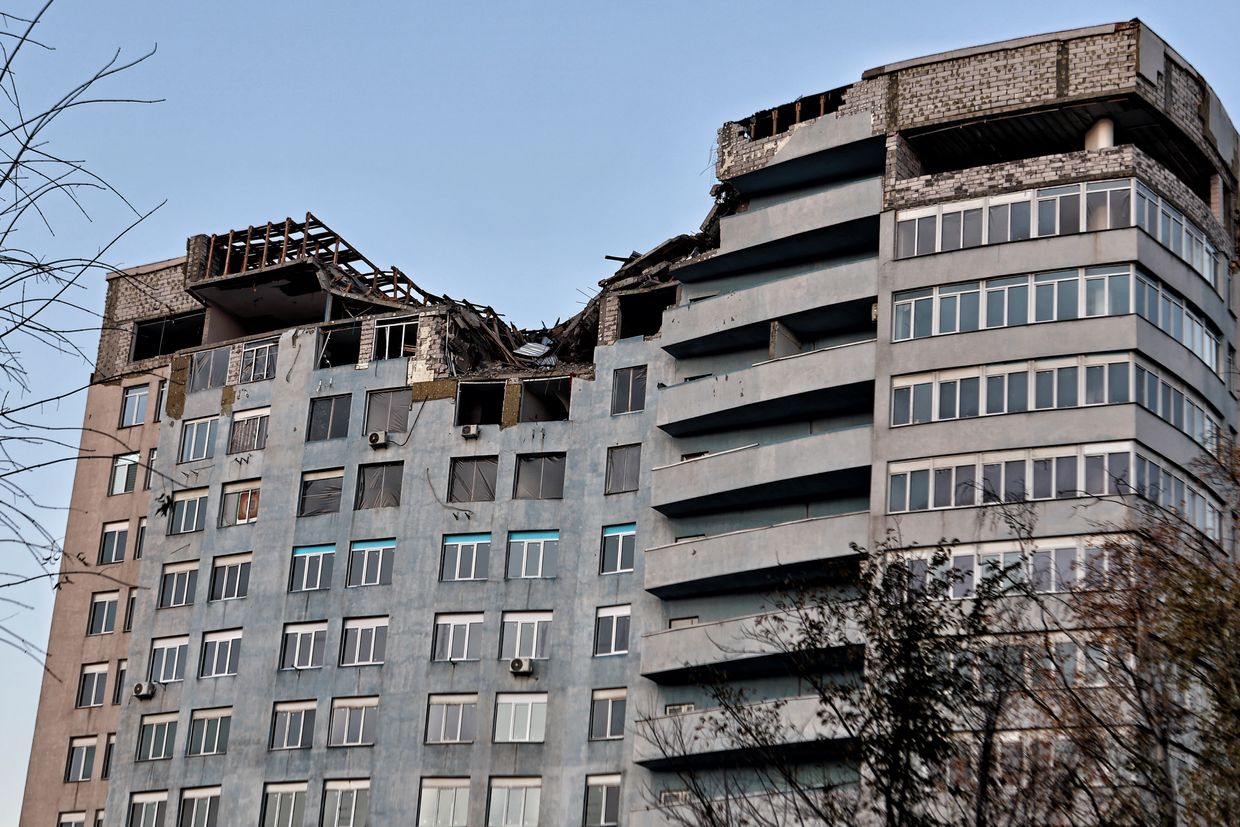



Since the beginning of Russia’s full-scale invasion, over 50% of the housing stock “in a significant number” of Ukrainian cities and towns has been damaged or destroyed, the Kyiv School of Economics estimated in July. Drone attacks account for a fraction of the damage, but it’s hard to calculate how many exactly.
Rodkina was "lucky" — nobody was at her home during the attack on Chornomorsk, and her apartment can be repaired — but it's still painful for her to comprehend that her home came under attack.
"So many parties were held on that balcony, so many memories and warmth! So much life and emotions!" Rodkina wrote on Instagram under the photo of her apartment building the day after the drone strike.
"But I can't say there was despair (following the attack). My husband had gone to war, his mother has cancer, and my father had been hospitalized after a heart attack," Rodkina says. "These were very difficult times for the family. The apartment incident felt like, 'it can’t get any worse.'"
Rodkina's family is waiting for a special state commission to evaluate the damage done to their apartment so they can receive financial support from the state. She and her husband still plan to move back to their apartment in Chornomorsk after the war is over.
Ukraine's drone hunters
While civilians take shelter, hoping their loved ones stay unharmed and their homes remain intact, Ukrainian service members work tirelessly to destroy Russian drones before they can cause any trouble. One of them is Dmytro from Ukraine’s 117th Territorial Defense Brigade, who is identified in this article only by his first name due to security reasons.
He commands three mobile air defense squads, who are based in the northeastern Sumy Oblast that borders Russia. Sumy Oblast faces swarms of drones nearly every night launched from across the Russian border. The Ukrainian military created these special units to quickly shoot down Russian drones using small arms and avoid depleting expensive interceptor missiles provided by Western allies.
Dmytro says his 12-member team has downed 19 drones in the past three months, compared to only seven throughout 2023. Due to a dramatic increase in workload and shortage of personnel, Dmytro’s team is currently on constant duty, with no rotations.
They take turns resting so that at least one person from a group is watching the sky at any given moment to avoid missing a potential threat. Besides drones, Sumy Oblast is regularly targeted by bombs and missiles.
"We are exhausted, but we hold on… If we leave, something will surely hit (the city), leaving people without heat, electricity, or water, and we cannot allow that," Dmytro says in a phone call with the Kyiv Independent.


In September, for the first time since the full-scale invasion, Russia launched drone attacks on cities and towns across Ukraine every day for an entire month. Russian troops used 1,334 drones that month, compared to 75 in March 2023, according to a recent report by Kyiv-based investment bank Dragon Capital. Meanwhile, the number of missiles launched by Russia was almost twice as low as in August, the report shows.
In October, drone attacks intensified even more. Russia launched 2,023 Shaheds and other kinds of attack drones at civilian and military facilities in Ukraine, out of which 1,185 were intercepted, the General Staff of Ukraine's Armed Forces wrote on Nov. 1. Russia is now using 10 times more Shahed drones than last autumn, President Volodymyr Zelensky said on Nov. 4.
Ukrainian officials anticipated that Russia would begin a renewed campaign of large-scale missile strikes on the country's energy infrastructure with the onset of the heating season, which started mid-autumn. After a pause of more than two months, on the morning of Nov. 11, Ukrainians across the country received warnings of a mass missile attack, but it later turned out to be a Russian aviation training exercise.
Russia's recent strategy of daily mass drone barrages may be aimed at depleting Ukraine's air defense systems ahead of an intensified missile campaign, according to experts interviewed by the Kyiv Independent last month. Sidharth Kaushal, a senior research fellow at the Royal United Services Institute (RUSI), suggested that this tactic could also force Ukraine to expose its air defense network when intercepting drones.
As Ukrainians across the country are bracing for mass missile attacks in the near future, Dmytro’s team keeps spending their nights in the field hunting for Russian drones. Their primary motivation is protecting native Sumy, where their families live. However, the soldiers urgently need more trained and highly motivated personnel and additional weapons to keep up with the escalating workload.
"It hasn't become easier, it's only getting harder. Russians won't go anywhere," Dmytro concludes. "We can't just hope this will end on its own. We need to destroy them (the Russian troops), and only then will it end."



